Simulation Standard
Technical Journal
A Journal for Process and Device Engineers
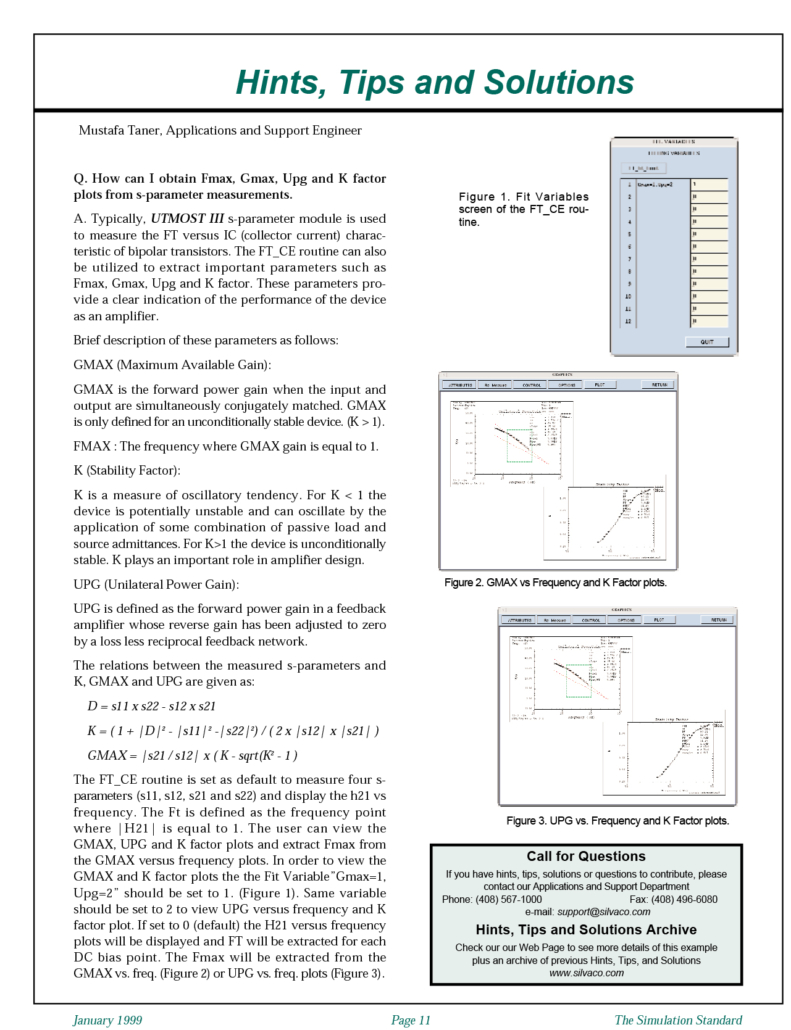
Hints & Tips January 1999
A. Typically, UTMOST III s-parameter module is used to measure the FT versus IC (collector current) characteristic of bipolar transistors. The FT_CE routine can also be utilized to extract important parameters such as Fmax, Gmax, Upg and K factor. These parameters provide a clear indication of the performance of the device as an amplifier.
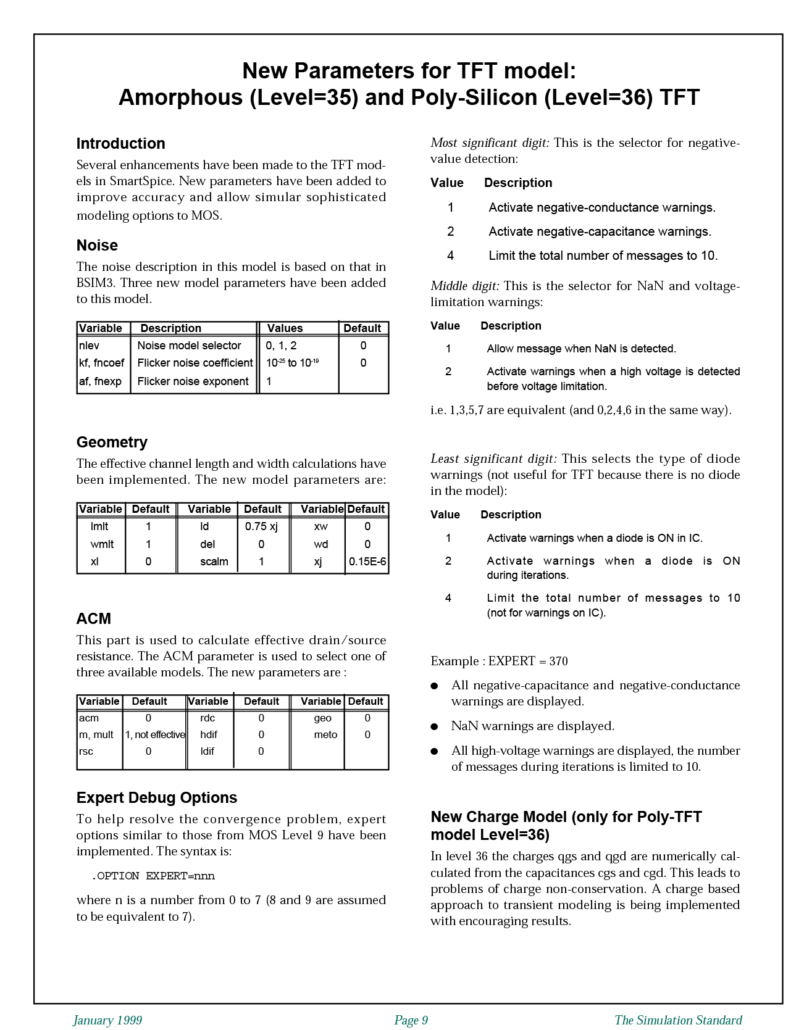
New Parameters for TFT model: Amorphous (Level=35) and Poly-Silicon (Level=36) TFT
Several enhancements have been made to the TFT models in SmartSpice. New parameters have been added to improve accuracy and allow simular sophisticated modeling options to MOS.
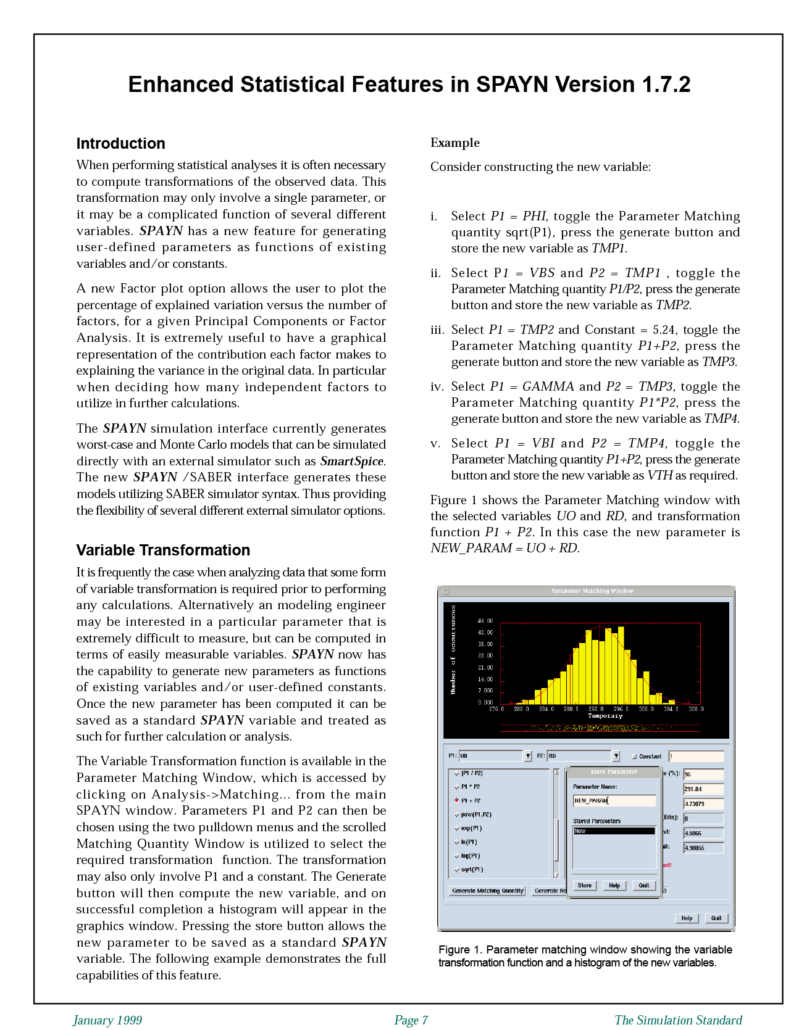
Enhanced Statistical Features in SPAYN Version 1.7.2
When performing statistical analyses it is often necessary to compute transformations of the observed data. This transformation may only involve a single parameter, or it may be a complicated function of several different variables. SPAYN has a new feature for generating user-defined parameters as functions of existing variables and/or constants.
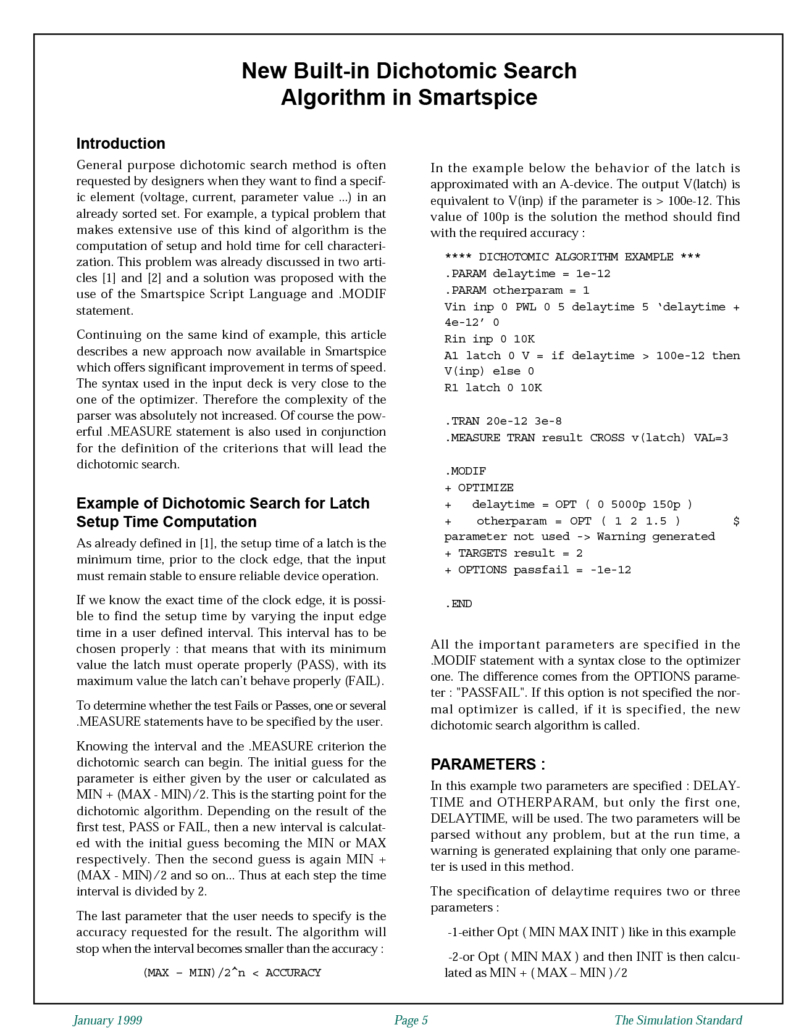
New Built-in Dichotomic Search Algorithm in Smartspice
General purpose dichotomic search method is often requested by designers when they want to find a specific element (voltage, current, parameter value ...) in an already sorted set. For example, a typical problem that makes extensive use of this kind of algorithm is the computation of setup and hold time for cell characterization. This problem was already discussed in two articles [1] and [2] and a solution was proposed with the use of the SmartSpice Script Language and .MODIF statement.
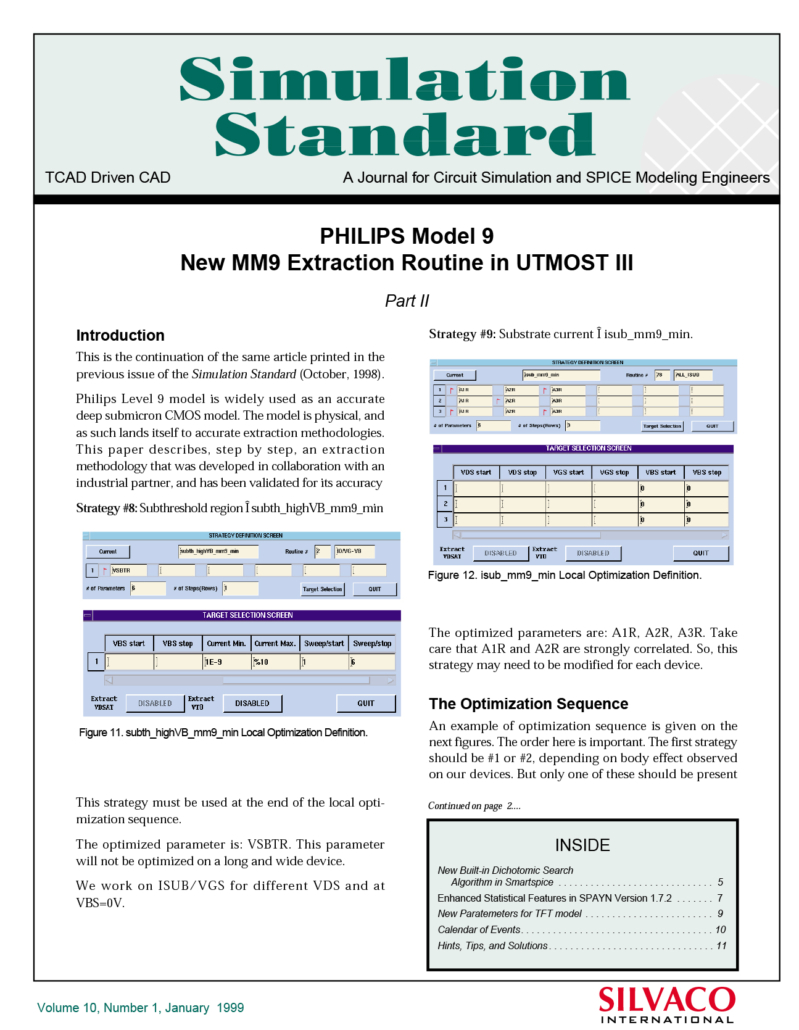
PHILIPS Model 9 New MM9 Extraction Routine in UTMOST III
Philips Level 9 model is widely used as an accurate deep submicron CMOS model. The model is physical, and as such lands itself to accurate extraction methodologies.
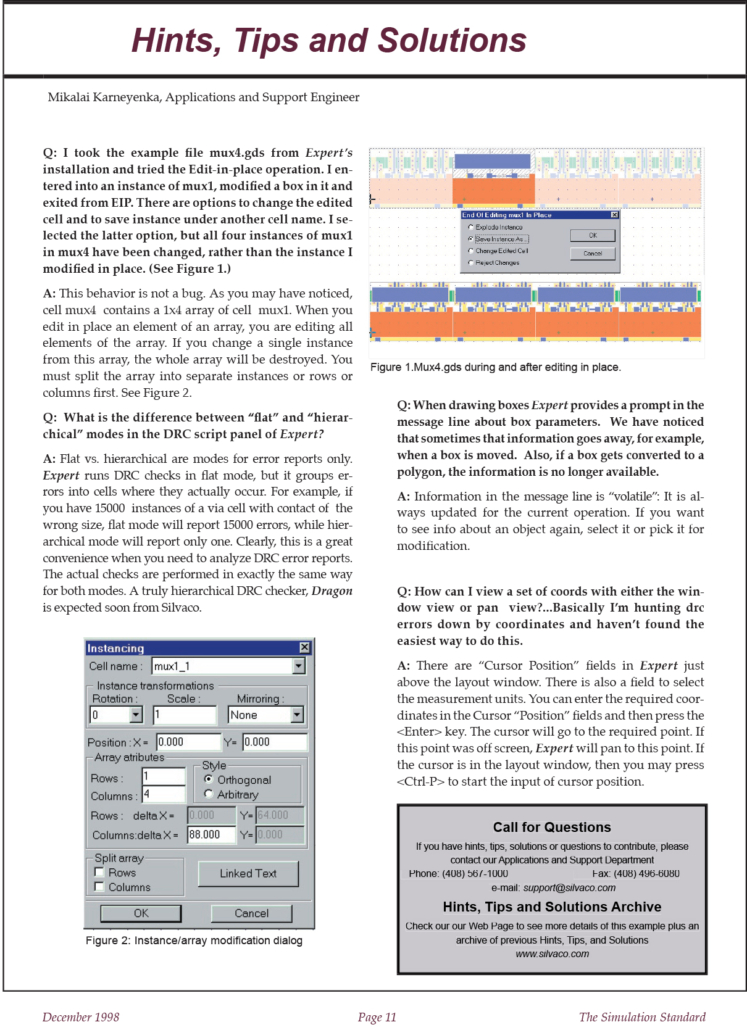
HINTS & TIPS – December 1998
Q: I took the example file mux4.gds from Expert's installation and tried the Edit-in-place operation. I entered into an instance of mux1, modified a box in it and exited from EIP. There are options to change the edited cell and to save instance under another cell name.

